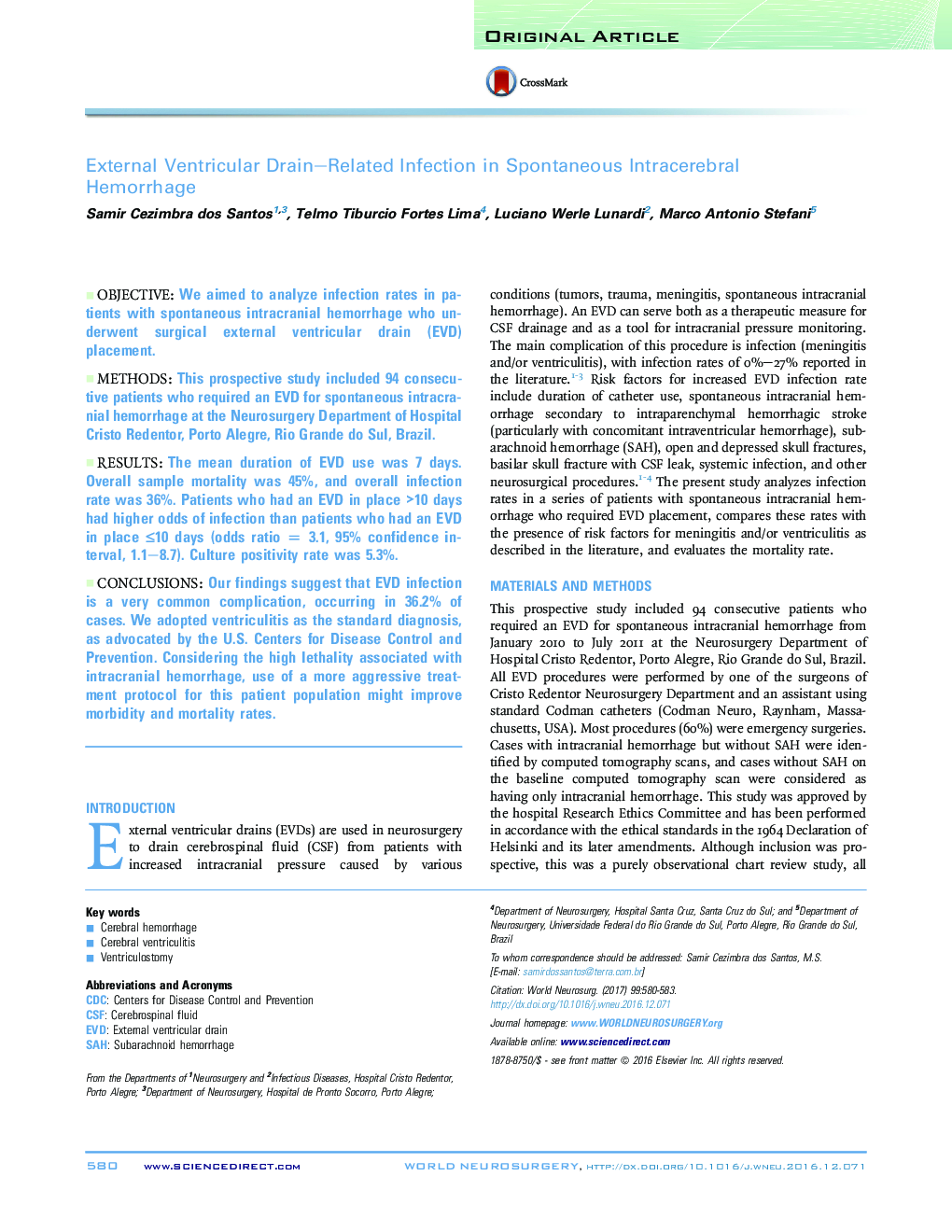| Article ID | Journal | Published Year | Pages | File Type |
|---|---|---|---|---|
| 5634864 | World Neurosurgery | 2017 | 4 Pages |
ObjectiveWe aimed to analyze infection rates in patients with spontaneous intracranial hemorrhage who underwent surgical external ventricular drain (EVD) placement.MethodsThis prospective study included 94 consecutive patients who required an EVD for spontaneous intracranial hemorrhage at the Neurosurgery Department of Hospital Cristo Redentor, Porto Alegre, Rio Grande do Sul, Brazil.ResultsThe mean duration of EVD use was 7 days. Overall sample mortality was 45%, and overall infection rate was 36%. Patients who had an EVD in place >10 days had higher odds of infection than patients who had an EVD in place â¤10 days (odds ratio = 3.1, 95% confidence interval, 1.1-8.7). Culture positivity rate was 5.3%.ConclusionsOur findings suggest that EVD infection is a very common complication, occurring in 36.2% of cases. We adopted ventriculitis as the standard diagnosis, as advocated by the U.S. Centers for Disease Control and Prevention. Considering the high lethality associated with intracranial hemorrhage, use of a more aggressive treatment protocol for this patient population might improve morbidity and mortality rates.
